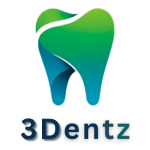Submit Your Details to get callback from our team!
CAD
CAD
CAD (Computer-Aided Design) software in dentistry refers to specialized software used by dental professionals to design and create dental restorations, appliances, and prosthetics digitally. CAD software plays a crucial role in modern dentistry by enabling precise and efficient design workflows CAD software is used to design various dental restorations and appliances, including crowns, bridges, veneers, inlays, onlays, dentures, and orthodontic appliances. It allows dental professionals to create detailed digital models of dental prosthetics based on patient-specific anatomical data obtained from intraoral scans or other digital impressions.
CAD software is typically integrated into a digital workflow that starts with the acquisition of digital impressions using intraoral scanners or cone beam computed tomography (CBCT) scans. The digital impressions are imported into the CAD software, where dental professionals use specialized tools and functionalities to design the desired dental restoration or appliance.
Key Features of CAD Software for Dentistry:
· Virtual Modeling: CAD software enables the creation of precise 3D models of dental restorations, allowing for detailed customization and adjustments.
· Anatomic Mapping: The software can analyze and map the patient's dental anatomy to ensure accurate fit and functionality of the designed restoration.
· Automated Tools: CAD software often includes automated features for crown margin detection, occlusal adjustments, and restoration alignment.
· Material Selection: Dental CAD software provides options for selecting appropriate materials (e.g., ceramics, resins, metals) for fabricating dental restorations.
· Compatibility: CAD software is compatible with CAM (Computer-Aided Manufacturing) technologies, allowing seamless transition from design to fabrication.
Benefits of CAD Software in Dentistry:
· Precision: CAD software enables precise design of dental restorations tailored to individual patient anatomy.
· Efficiency: Digital workflows with CAD software streamline the design process, reducing turnaround times for dental prosthetics.
· Customization: Dental professionals can customize the design of restorations based on aesthetic preferences and functional requirements.
Patient Communication: CAD software facilitates visual representation and communication of treatment plans to patients, enhancing patient understanding and involvement in the treatment process.
